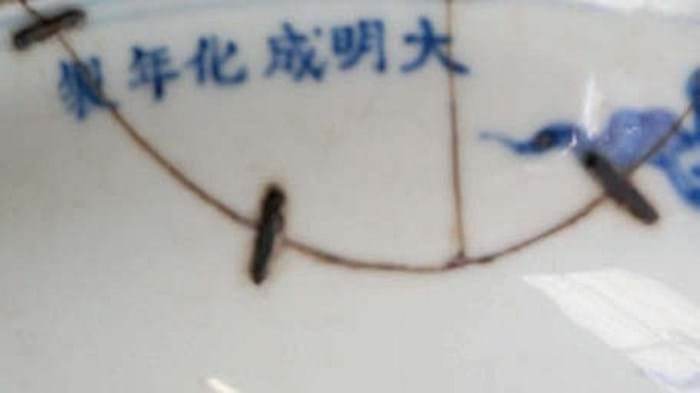This was Tim Summersgill, owner of Summersgill Auctioneers, speaking about a buyer had come to North Yorkshire from Japan for the sale of a blue and white porcelain dish, believed to be from the Ming period.
The auctioneers had catalogued the dish, with a staple repair to the rim, as 19th century and expected it to sell for under £300 at a general sale on May 12. However, interest in the run-up to the auction had included a commission bid of £13,000.
On the day, it took more than 100 times its estimate and sold to the buyer who had flown in for the sale.
The 12in (30cm) shallow dish – brought in for sale by a local lady who had owned it for many years – is of a type first pioneered during the Xuande (1425-35) period.
The decoration includes a branch of flowering pomegranate to the centre and four fruiting branches including peach, lychee, persimmon and cherry blossom to the cavetto. Written in a horizontal line under the rim is a six-character reign mark for the emperor Chenghua (1465-87).

A detail of the £31,000 dish that sold in North Yorkshire.
A handful of other Chenghua-marked dishes of similar size with this ‘pomegranate’ pattern are known, including a dish sold as part of the Greenwald collection by Christie’s Hong Kong in December 2010. It realised HK$2.66m ($343,939).
This helped explain the enthusiasm for this piece that, despite its condition issues, sold at £31,000 (plus buyer’s premium of 18% including VAT).















